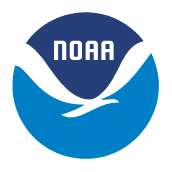GSL research improves weather data, forecasts, and computing techniques used by industry, decision-makers, and stakeholders to make operations safer and more efficient, thus protecting lives, property, and promoting economic prosperity.
Economic Studies
- NOAA wind forecasts result in $150 million in energy savings every year
- Evaluating the economic impacts of improvements to weather models
- Better forecasts lead to smaller losses in work time
Agriculture
- Both short- and long-term forecasts are essential in agriculture production.
- HRRR predictions support better localized precipitation forecasts.
Aviation

- The FAA requires airlines to carry enough fuel for an aircraft to fly to an alternate destination if weather conditions fall below certain thresholds.
- The HRRR model is the largest contributor to the FAA’s NextGen Air Transportation System that supports strategic traffic flow management.
- 69% of aviation flight delays are caused by weather costing air travelers billions of dollars each year.
- GSL weather models help reduce weather aviation flight delays that cost air travelers billions of dollars each year.
- “The most recent transition of the High-Resolution Rapid Refresh (HRRR) model to NWS operations improves aviation forecasts at air terminals and aloft, reducing air traffic delays which cost the airline industry billions of dollars annually.” – FAA
Energy
- Cost estimates from storm-related power outages to the U.S. economy are between $20B and $55B annually.
- “NOAA’s continual advancement of forecast skill in weather models improves the stability of our electric grid.” – Vaisala Corporation
- The American public collectively receives $31.5B in benefits from forecasts each year
- “GSL’s development of foundational and pragmatic state-of-the-science technologies to improve predictions of weather and its impacts on society has been one of the nation’s true success stories that is significantly under-appreciated given the enormous value it returns to the nation.” – The Weather Company

